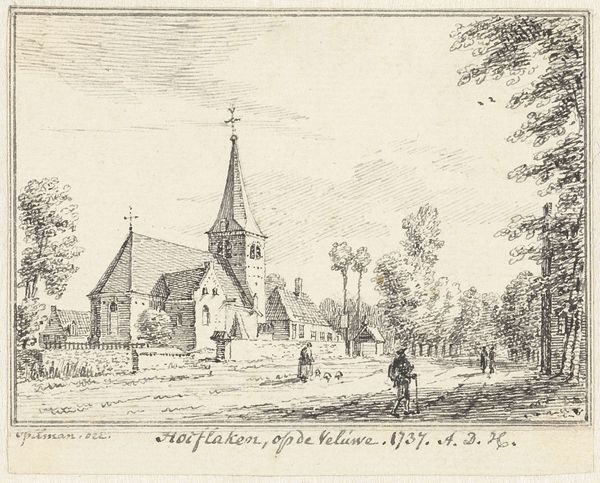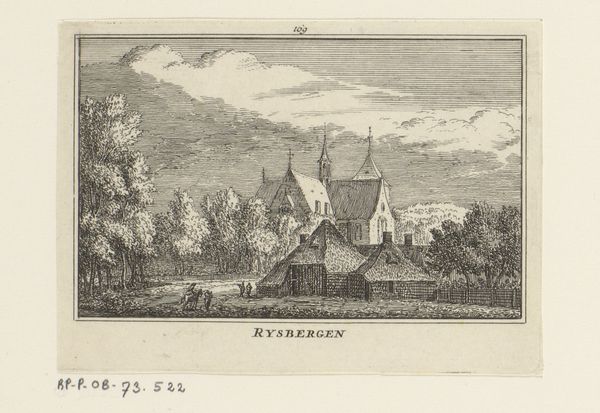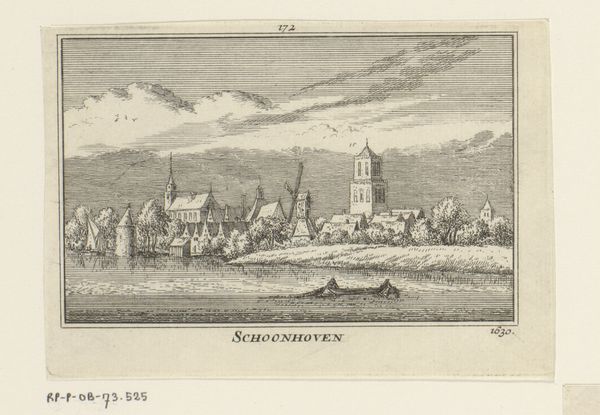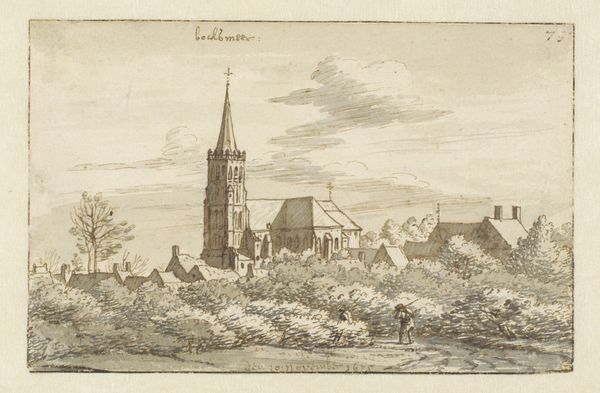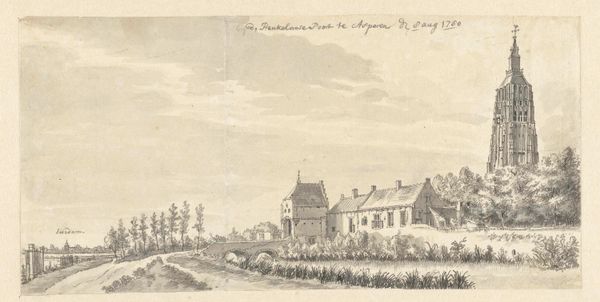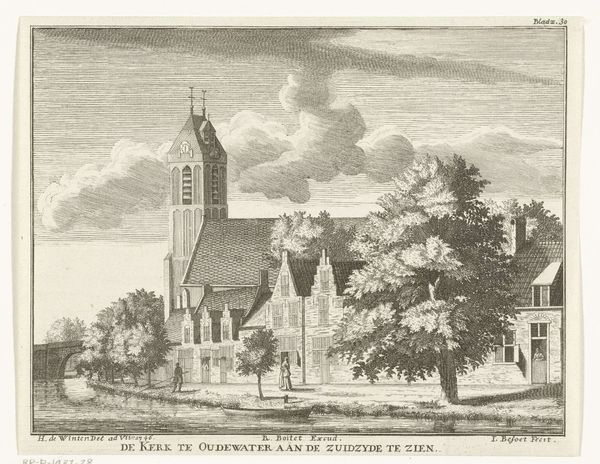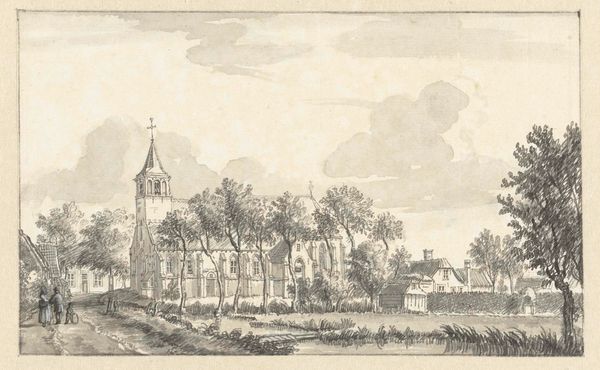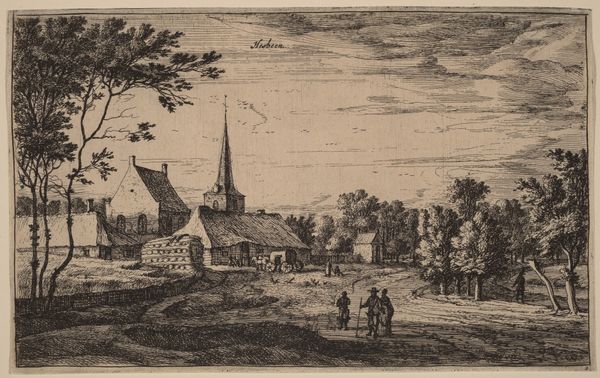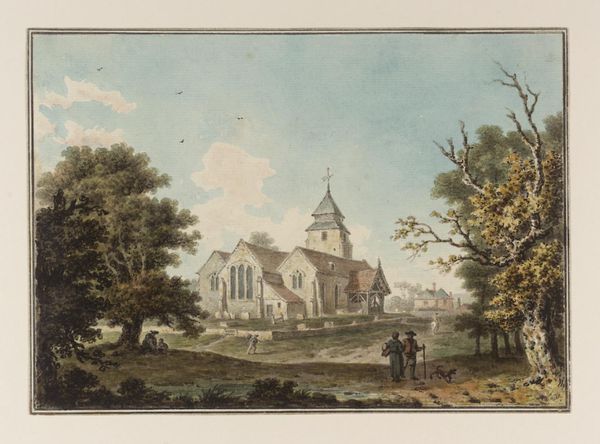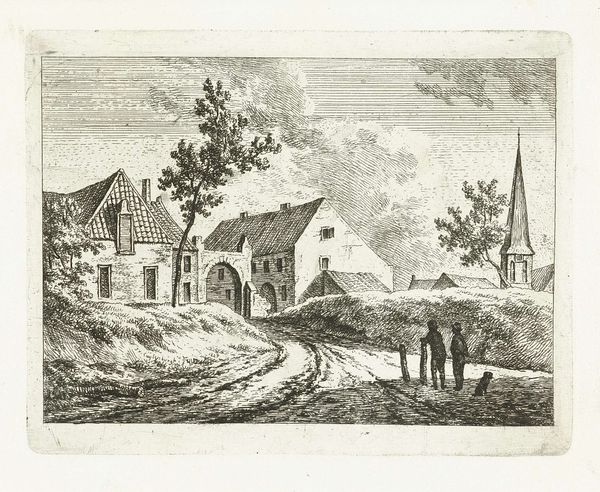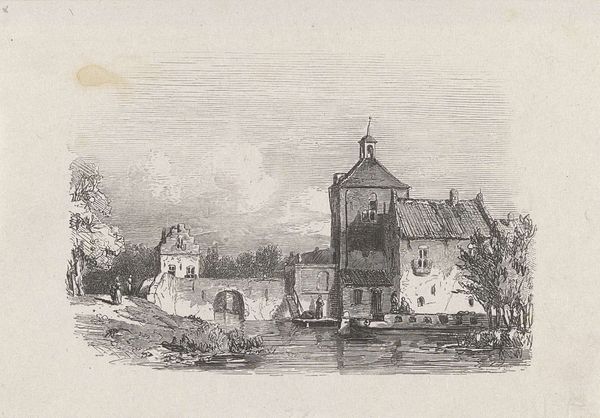
print, engraving
#
dutch-golden-age
# print
#
landscape
#
cityscape
#
engraving
Dimensions: height 80 mm, width 115 mm
Copyright: Rijks Museum: Open Domain
Curator: Welcome. We’re standing before “Gezicht op Castricum, 1622,” a print by Abraham Rademaker, created between 1727 and 1733. It's currently housed right here in the Rijksmuseum. The engraving offers a meticulously rendered view of Castricum, a town north of Amsterdam. Editor: It’s striking how much detail Rademaker manages to capture. Even in the small scale of the print, there’s a palpable sense of daily life. I find the overall atmosphere quiet, almost dreamlike, despite the bustling figures. Curator: Precisely. Rademaker’s prints, including this one, were widely distributed, contributing to a shared visual understanding, even a collective imagining, of Dutch landscapes. It’s interesting that although the engraving was made a century later, Rademaker inscribes the year 1622 in the lower part. This print, though not exactly a reliable record of daily life in 1622, shapes the viewers conception of that historical moment, a fabricated image acting as evidence of an imagined past. Editor: And it prompts me to wonder, what exactly was being commemorated? Or perhaps more aptly, what power dynamics are at play? The idyllic scene might obscure the hardships endured by many during the Dutch Golden Age—the pervasive wealth disparity, the implications of global trade fueled by colonialism, and the environmental concerns that marked the Dutch landscape in this period. Curator: Indeed. Prints like these played a crucial role in constructing a specific vision of the Netherlands. One often sanitized and idealized for public consumption, masking the socio-political realities that shaped that landscape. What we must realize is that such scenes are often carefully orchestrated representations of power. Editor: It’s in these absences—the stories untold, the perspectives omitted—that art gains its political weight, revealing just as much, if not more, than what is readily visible. And in looking critically we can reimagine those power structures. Curator: It gives one much to consider; now let us proceed onward toward the next masterpiece in our collection. Editor: A great way to contextualize and expand on our visual landscape—on to the next narrative!
Comments
No comments
Be the first to comment and join the conversation on the ultimate creative platform.
